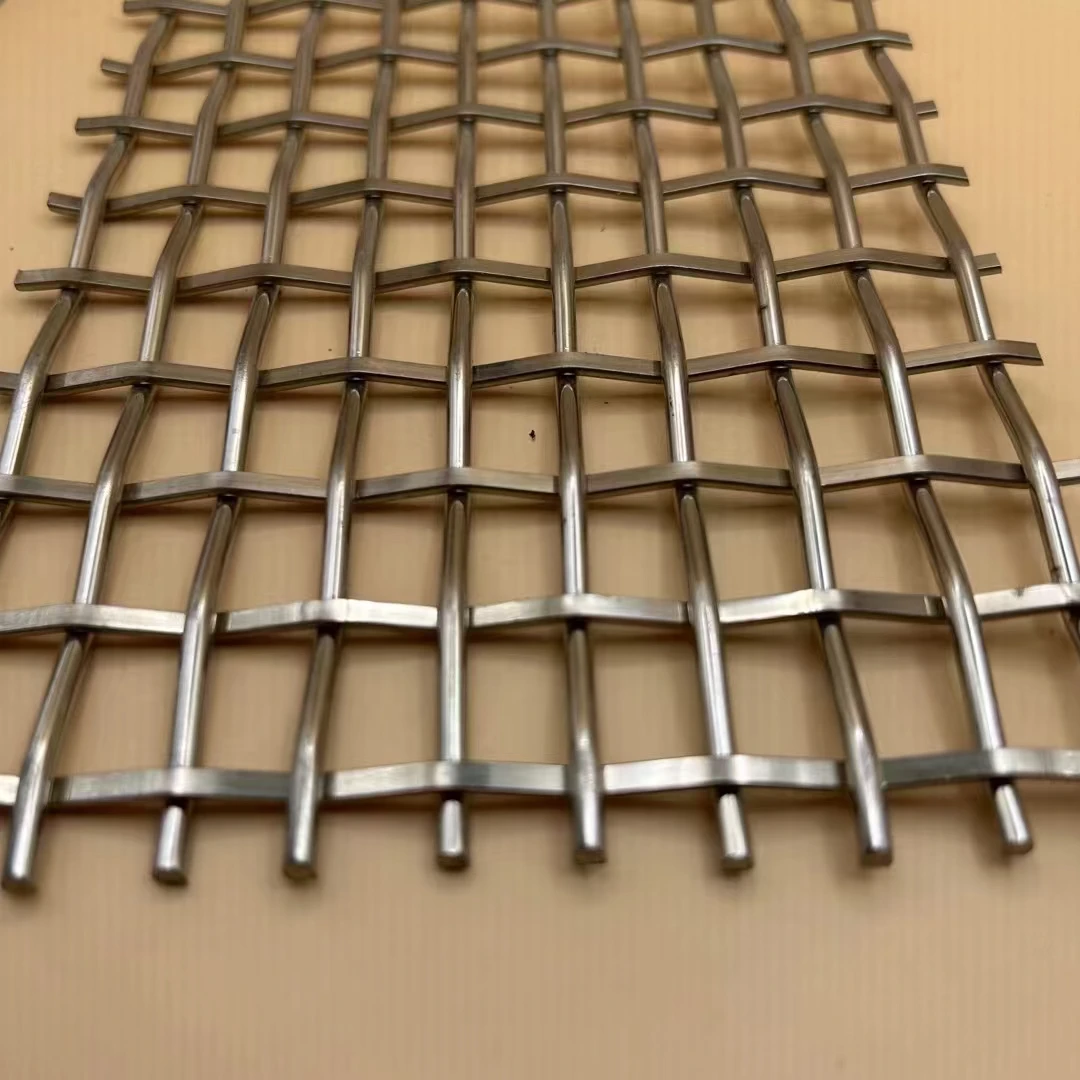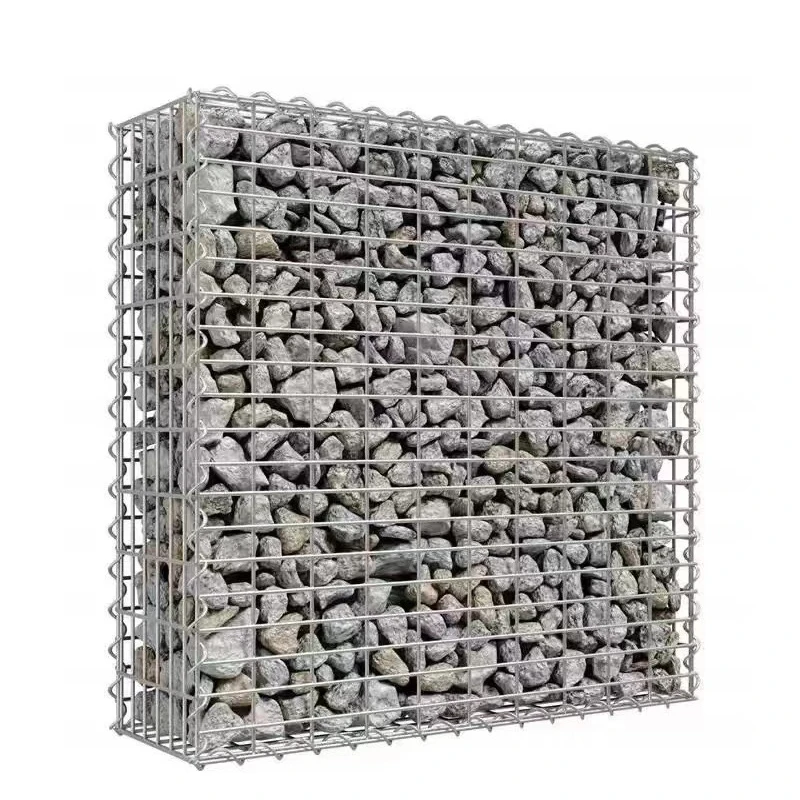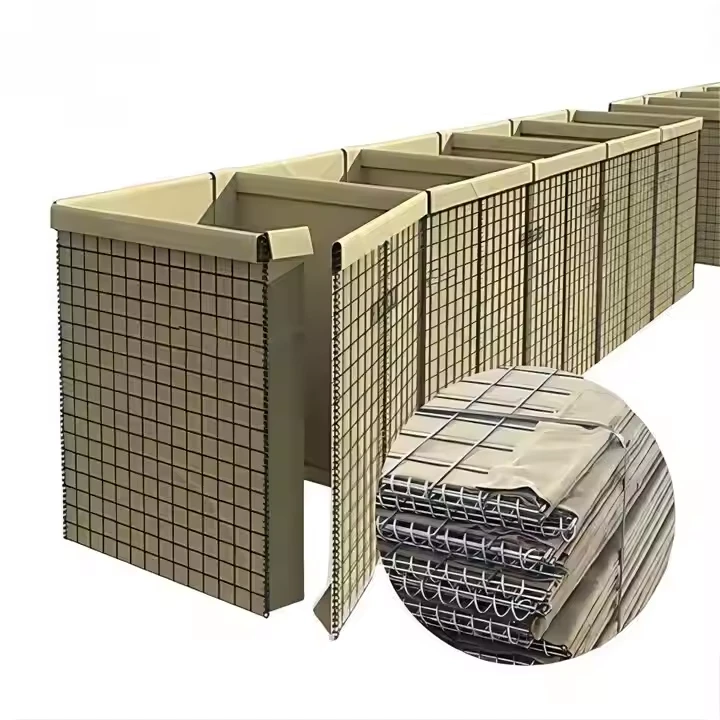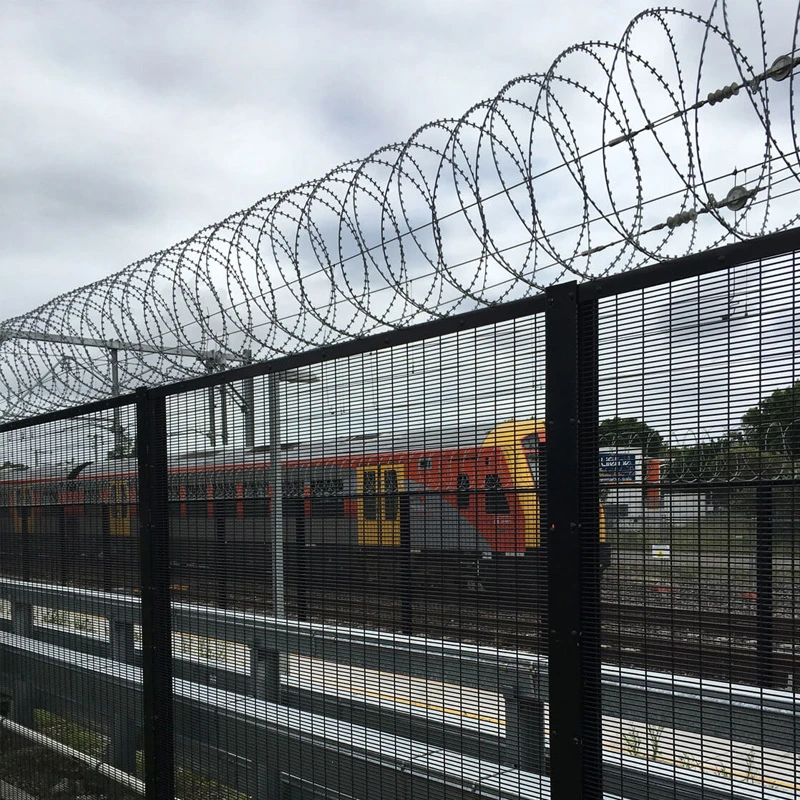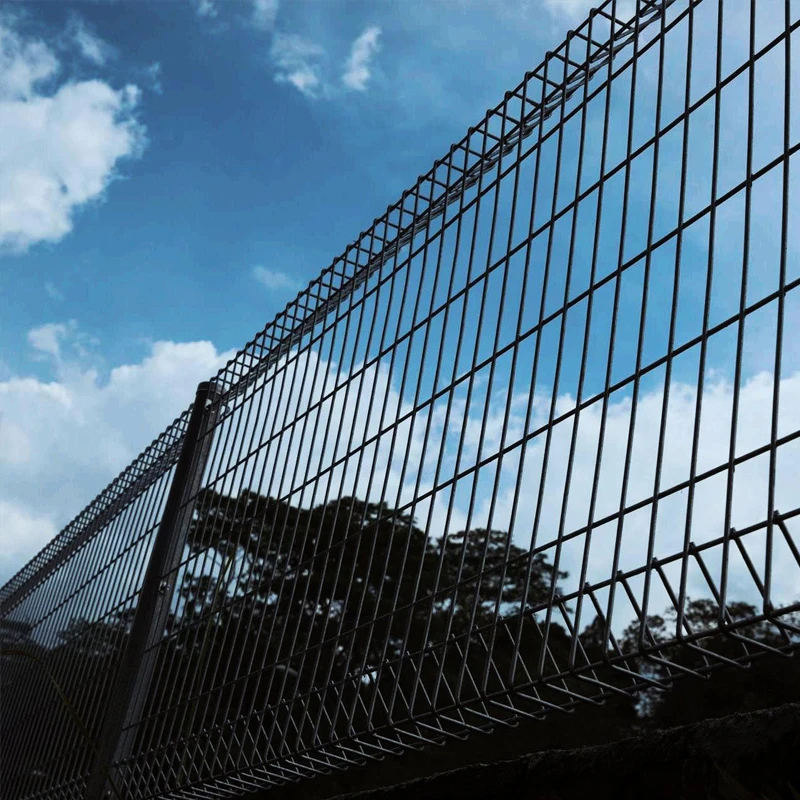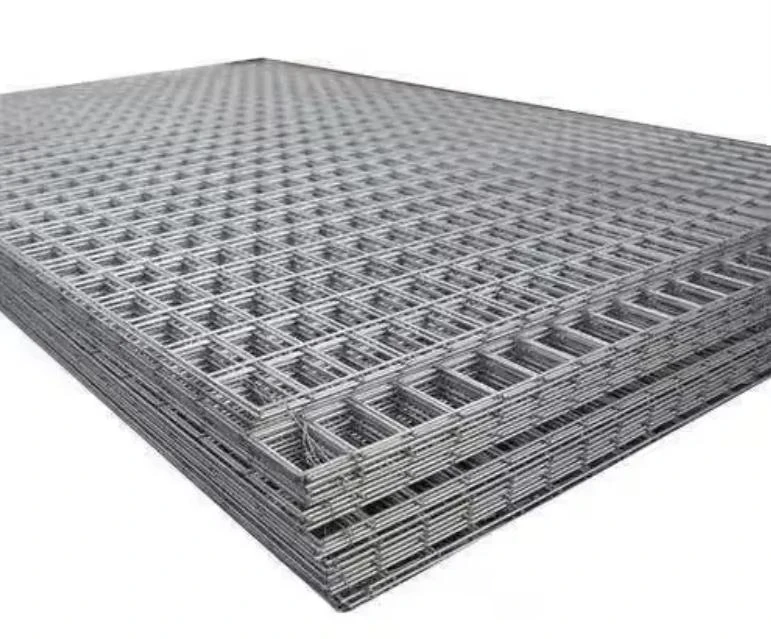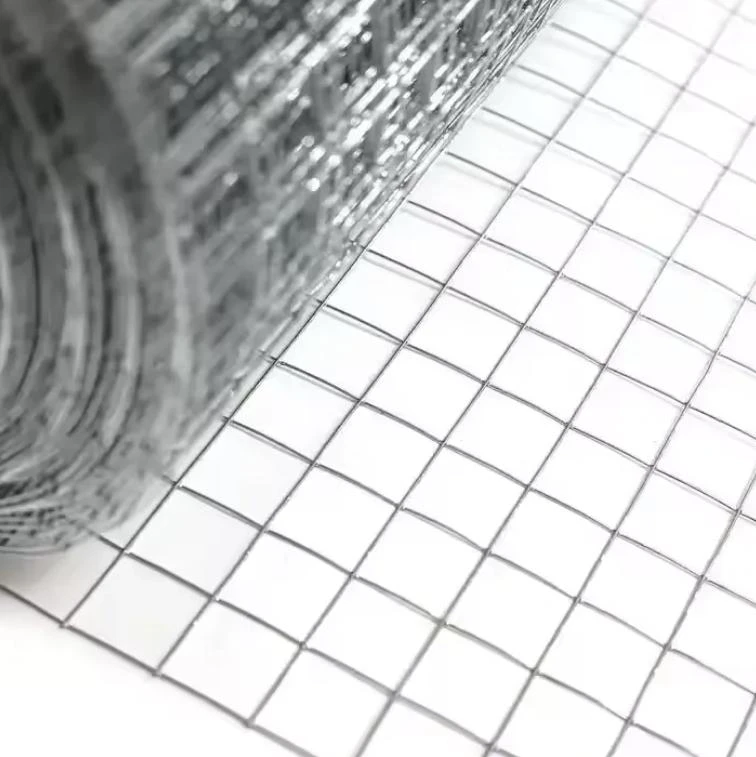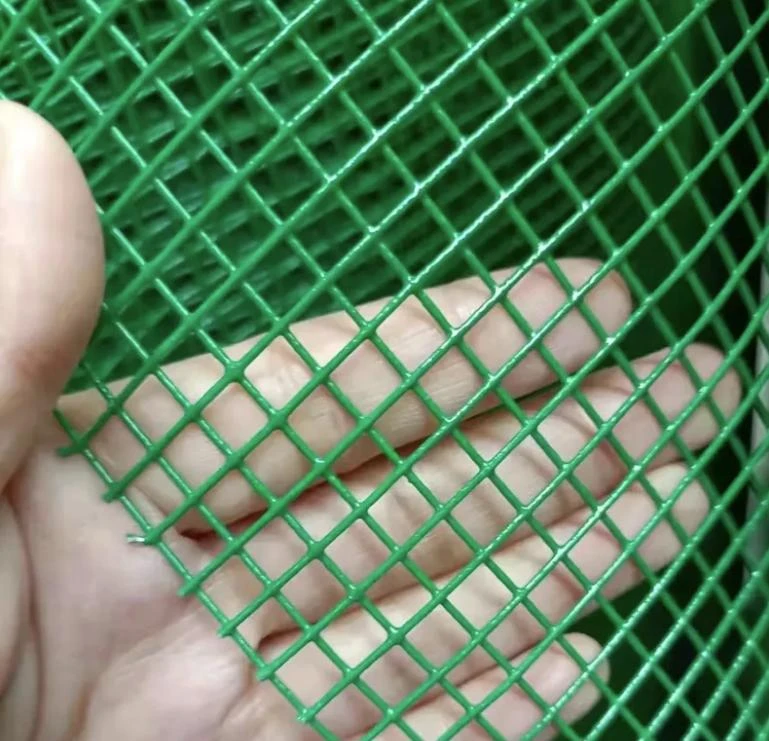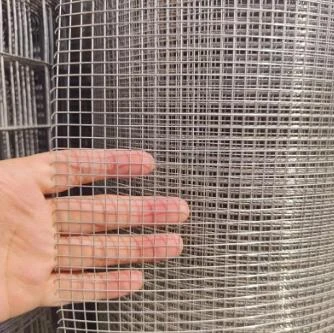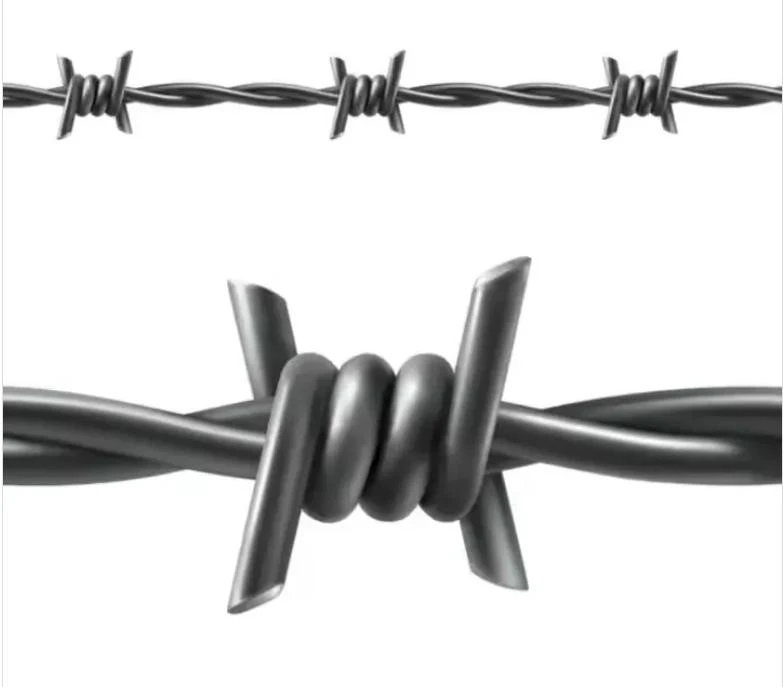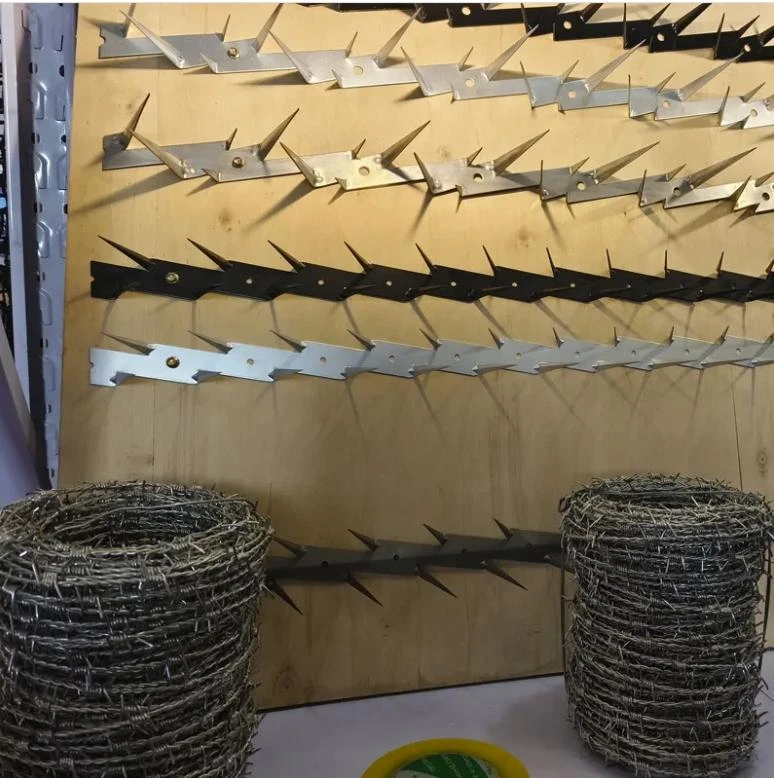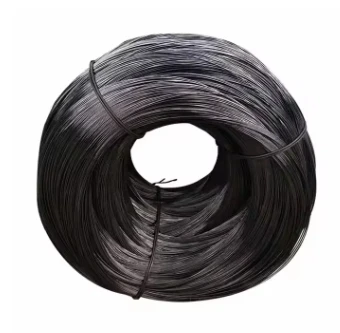حاجز هيسكو
يُعد القفص المقاوم للانفجار، والمعروف أيضًا باسم الجدار المقاوم للانفجار أو الشبكة المقاومة للانفجار، والمعروف أيضًا باسم حاجز هيسكو أو حصن هيسكو، شكلًا مهمًا من أشكال الحماية في الحرب الحديثة والسيطرة على الفيضانات. في الاستخدام الفعلي، يشكل جدارًا واقيًا من شبكة سلكية صلبة عن طريق ملء الحجارة أو الرمل أو التربة في القفص الشبكي. نظرًا لتركيبه الموصى به وقابليته للطي وسهولة تشغيله، يتم تطبيقه في الحرب الحديثة.
|
قطر سلك الشبكة
|
3 مم، 4 مم، 5 مم، 6 مم وما إلى ذلك
|
|
قطر السلك الزنبركي
|
3 مم، 4 مم، 5 مم، 6 مم وما إلى ذلك
|
|
حجم الشبكة
|
50*50 مم، 50*100 مم، 37.5*100 مم، 60*60 مم، 65*65 مم، 70*70 مم، 76*76 مم، 80*80 مم أو
حسب طلبك.
|
|
حجم اللوحة
|
0.61*0.61 م، 1*1 م، 1.2*1.2 م، 1.5*1.5 م، 1.5*2 م، 2*2 م، 2.21*2.13 م أو حسب طلبك.
|
|
ينهي
|
مجلفن كهربائيا بعد اللحام
مجلفن بالغمس الساخن ملحوم
طلاء الجلفان بعد اللحام
|
|
الجيوتكستايل
|
مادة البولي بروبيلين غير المنسوجة الثقيلة
|
|
التعبئة والتغليف
|
ملفوفة بغلاف منكمش أو معبأة في منصة نقالة
|
الحاجز الدفاعي / الحاجز الدفاعي هو نوع حديث من الجابيون يستخدم للدفاع والحماية من الفيضانات. وهو مصنوع من حاوية شبكية سلكية قابلة للطي وبطانة من القماش الثقيل ويمكن استخدامه كوحدة واحدة أو وحدات متعددة متصلة ببعضها البعض
تفاصيل التغليف
ملفوفة بغلاف منكمش أو معبأة في منصة نقالة. 5-10 وحدات على المنصة.
طلب
1)الأمن المحيط والجدران الدفاعية
2) حماية الهياكل القائمة
3) مناطق البحث عن المتفجرات والمواد الممنوعة
4) هندسة حماية المنطقة الساحلية
5) وضعيات إطلاق النار الدفاعية
6) جدار احتوائي للتحكم في الفيضانات
نقدم لكم حواجز Hesco المتميزة، والتي تم تصميمها بخبرة لتوفير حماية وتحصين فائقين لمختلف التطبيقات، من الاستخدام العسكري إلى مواقع البناء وسيناريوهات الاستجابة للطوارئ. يتم تصنيع حواجزنا باستخدام مواد متينة وعالية الجودة تضمن الأداء والموثوقية طويلة الأمد حتى في أكثر البيئات تطلبًا. تتميز كل حاجز Hesco بهيكل شبكي سلكي ملحوم قوي، مملوء بنسيج جيوتكسيل غير منسوج، مما يسمح بقوة واستقرار استثنائيين.
يوفر التصميم الفريد لحواجزنا سهولة النشر، مما يسمح بالإعداد السريع في المواقف الحرجة حيث يكون الوقت هو جوهر الأمر. إن تعدد استخدامات حواجز Hesco الخاصة بنا يجعلها مثالية للسيطرة على الفيضانات واحتواء المواد الخطرة وتوفير محيط آمن حول المناطق الحساسة. كما تتميز بالقدرة على تحمل الظروف الجوية السيئة، مما يضمن بقاء تحصيناتك سليمة خلال العواصف أو الفيضانات أو الرياح العاتية. تم تصميم كل حاجز لامتصاص الصدمات بشكل فعال، مما يجعلها خيارًا موثوقًا به للعمليات العسكرية ومشاريع الهندسة المدنية على حد سواء.
مع التركيز على السلامة، تم تصميم حواجز Hesco الخاصة بنا لتلبية معايير الصناعة الصارمة، مما يوفر راحة البال للمستخدمين من خلال ضمان أقصى قدر من الحماية. تم تصميم حواجزنا بشكل مبتكر لتكون معيارية وقابلة للتكيف، ويمكن ربطها بسهولة معًا لإنشاء تكوينات أكبر حسب الحاجة، مما يجعلها أداة أساسية لأي فريق بناء أو فريق استعداد للطوارئ. استثمر في جودة ومتانة حواجز Hesco الخاصة بنا للحصول على حماية لا مثيل لها وراحة البال. سواء كنت تقوم بتأمين موقع بناء أو الاستعداد للكوارث الطبيعية أو إنشاء معسكرات عسكرية آمنة، فثق في حواجز Hesco الخاصة بنا لتقديم الأداء الموثوق الذي تحتاجه. اختر حواجز Hesco الرائدة في الصناعة اليوم وقم بتحصين دفاعاتك بثقة.
Defensive Barrier Specifications: Mesh Sizes, Panel Dimensions & Coatings
At the core of effective defensive barriers lies precision in design—and Hesco barriers excel here, with specifications engineered for reliability in military, flood control, and industrial security. As a leading provider, JINJIU ensures every detail of these defence barrier systems—from mesh weave to coating thickness—aligns with high-stakes operational demands.
Mesh sizes are critical for structural integrity. Hesco barriers feature double-twisted hexagonal mesh, with standard openings ranging from 2.5×5cm to 5×10cm. The 2.5×5cm mesh, ideal for military defence barrier setups, prevents fine aggregate (like sand or gravel) from escaping when filled, ensuring the barrier retains shape under impact. For flood control or perimeter security, 5×10cm mesh balances strength with drainage, allowing water to pass while trapping larger fill materials (rock, concrete blocks) to reinforce the structure. All meshes use high-tensile steel wire (2.5-4.0mm diameter), resistant to cutting or deformation.
Panel dimensions cater to rapid deployment and scalability. Standard panels come in lengths of 1m, 3m, and 6m, with heights ranging from 0.5m to 3m—flexible enough for everything from temporary roadblocks to permanent border fortifications. The 3m×1m panel is a workhorse: lightweight (15-20kg) for quick manual installation, yet robust enough to form a 1m-high defensive barrier when filled. For larger projects, 6m×2m panels reduce assembly time, as fewer units cover more ground, while 0.5m-high variants suit low-profile security zones like industrial yards.
Coatings enhance durability across environments. Galvanized coatings (80-120g/m² zinc) are standard, protecting against rust in humid or coastal areas—vital for defensive barriers deployed long-term. For extreme conditions (chemical exposure, saltwater), PVC coatings (0.2-0.5mm thick) add a secondary layer, extending service life to 15+ years. These coatings adhere seamlessly to the mesh, ensuring no weak points where corrosion could start.
JINJIU’s Hesco barriers marry these specifications to purpose: tight 2.5×5cm mesh for military defence barrier resilience, 6m panels for rapid flood response, and dual coatings for all-weather reliability. Each component works in tandem, proving that in defensive barriers, precision isn’t just a detail—it’s the foundation of security.
The Science of Strength: What Makes Defensive Barriers Withstand Impact
Behind every defensive barrier that repels collisions, blasts, or forced entry lies a deliberate blend of material science and structural engineering. JINJIU’s defence barrier systems are engineered to turn impact energy into manageable force, ensuring they stand firm in military operations, riot control, and critical infrastructure protection.
Material selection is the first line of defense. High-tensile steel—with a minimum yield strength of 350MPa—forms the core of these defensive barriers. This steel undergoes cold working, aligning its molecular structure to resist deformation; even under 10,000N of force (equivalent to a 2-ton vehicle impact at 10km/h), the metal bends minimally before returning to shape. For coastal or corrosive environments, galvanized coatings (120g/m² zinc) add a protective layer, ensuring strength isn’t compromised by rust over time.
Structural design amplifies impact resistance. Modular panels with interlocking joints distribute force evenly across the defence barrier system, preventing localized failure. For example, 3m-wide panels connect via steel pins that absorb 30% of impact energy through controlled flexing, while reinforced edges (6mm steel plating) resist puncturing. When filled with aggregate (rock, concrete), the barrier’s mass acts as a kinetic buffer—slowing intruders or debris by converting motion into friction between fill materials.
Testing validates real-world performance. JINJIU’s defensive barriers undergo rigorous trials: 50km/h vehicle impact tests (mimicking ramming attempts), blast simulation (up to 5kg TNT equivalent), and cyclic load testing (10,000+ repetitions of 5kN force). These tests ensure the barrier retains 90% structural integrity post-impact, a critical metric for military defence barrier applications where failure isn’t an option.
Whether stopping a speeding vehicle at a checkpoint or shielding a facility from debris during a storm, the science is clear: strength comes from intentional design. JINJIU’s defensive barriers don’t just resist impact—they outsmart it, turning force into a testament to engineering excellence.




















